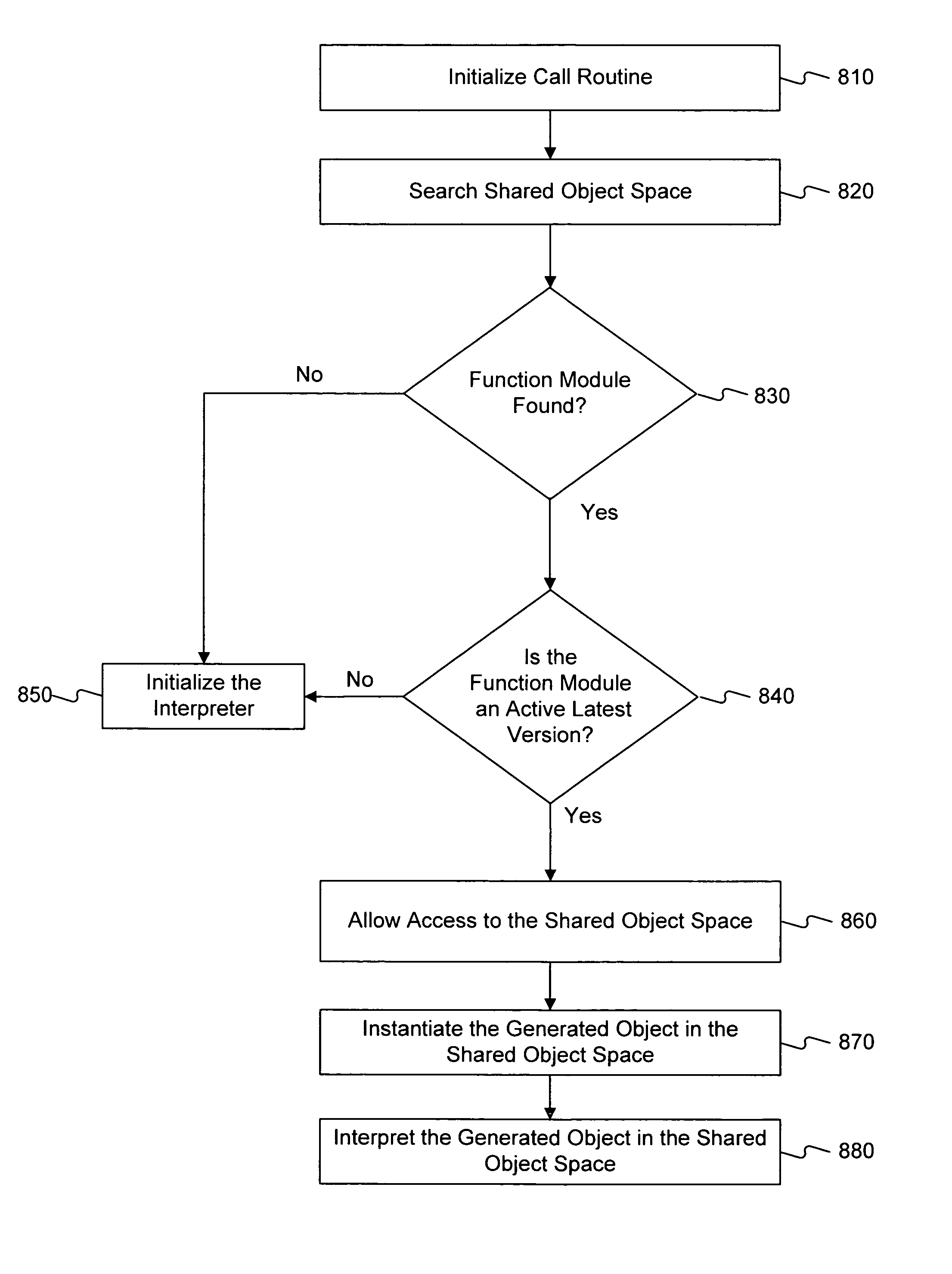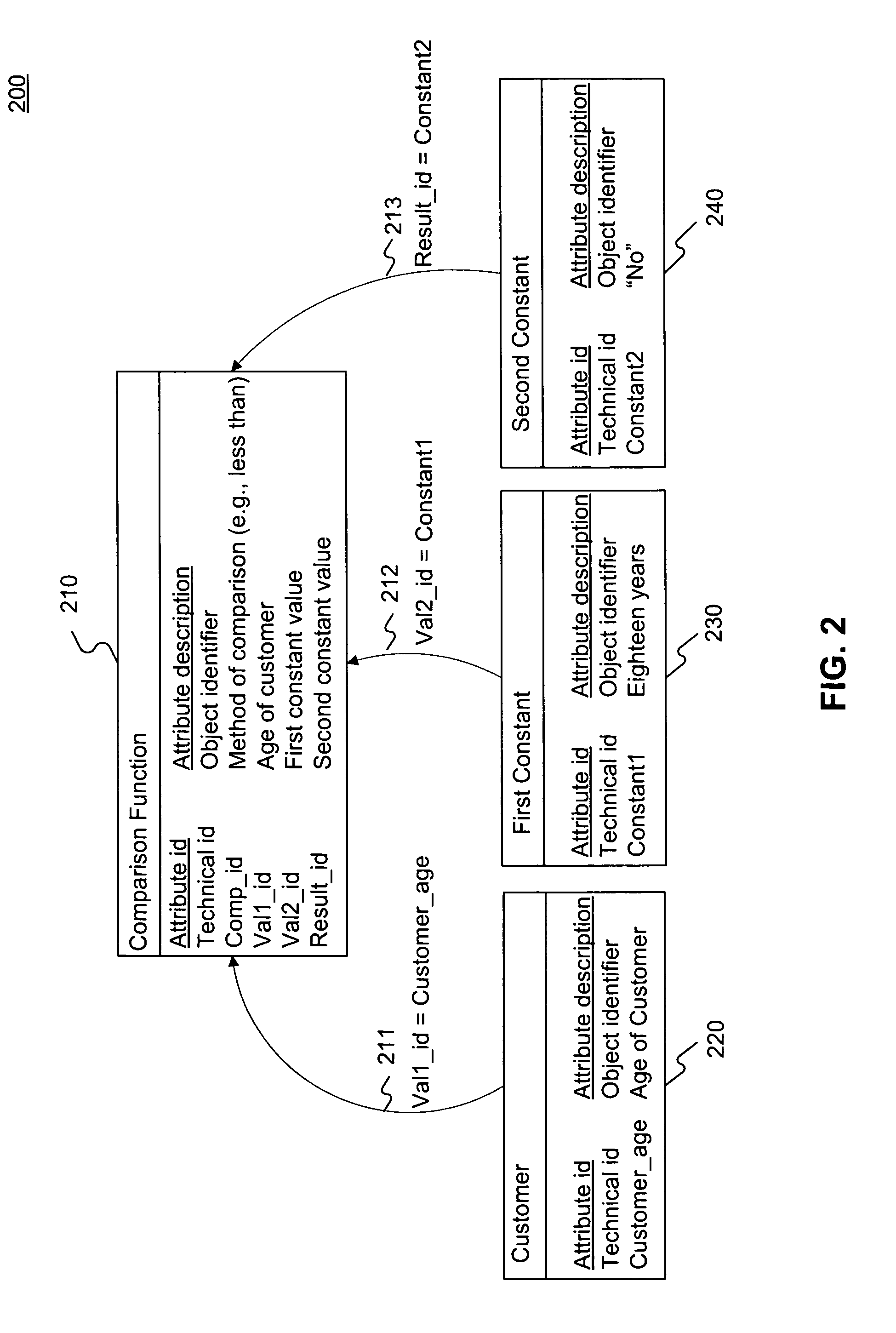Methods and systems for object interpretation within a shared object space
a technology of object interpretation and object space, applied in the field of software design and programming, can solve the problems of reducing overall performance, draining system resources, and inefficient runtime performance of applications
- Summary
- Abstract
- Description
- Claims
- Application Information
AI Technical Summary
Benefits of technology
Problems solved by technology
Method used
Image
Examples
Embodiment Construction
[0001]1. Technical Field
[0002]The present invention generally relates to the field of software design and programming. More specifically, the invention relates to methods and systems for interpreting an object within a shared object space.
[0003]2. Background Information
[0004]In object-oriented programming, classes may be used as a method to accelerate the development of an application. Generally, a “class” may be defined as a group of related data, meta-data, and functions. That is, a class defines the rules by which objects behave. An “object” is a concrete realization (i.e., instance) of a class that consists of data and the operations associated with that data. Objects may act as the building blocks of a software application. In turn, the software application may comprise business rules. A business rule may be generally defined as logical statements or instructions of what to do in different distinct situations. For example, a simple business rule may set forth that if a customer...
PUM
 Login to View More
Login to View More Abstract
Description
Claims
Application Information
 Login to View More
Login to View More - R&D
- Intellectual Property
- Life Sciences
- Materials
- Tech Scout
- Unparalleled Data Quality
- Higher Quality Content
- 60% Fewer Hallucinations
Browse by: Latest US Patents, China's latest patents, Technical Efficacy Thesaurus, Application Domain, Technology Topic, Popular Technical Reports.
© 2025 PatSnap. All rights reserved.Legal|Privacy policy|Modern Slavery Act Transparency Statement|Sitemap|About US| Contact US: help@patsnap.com



